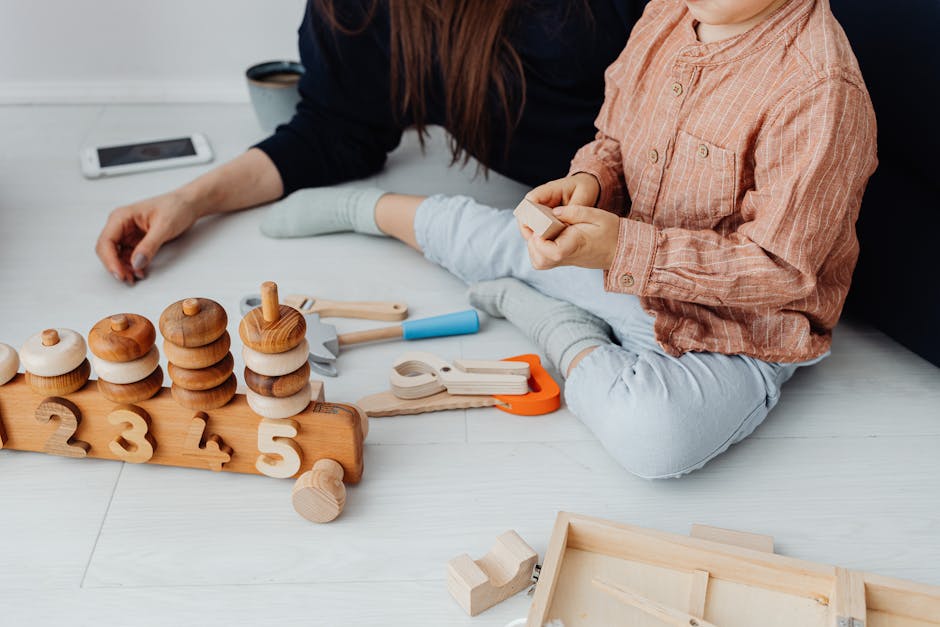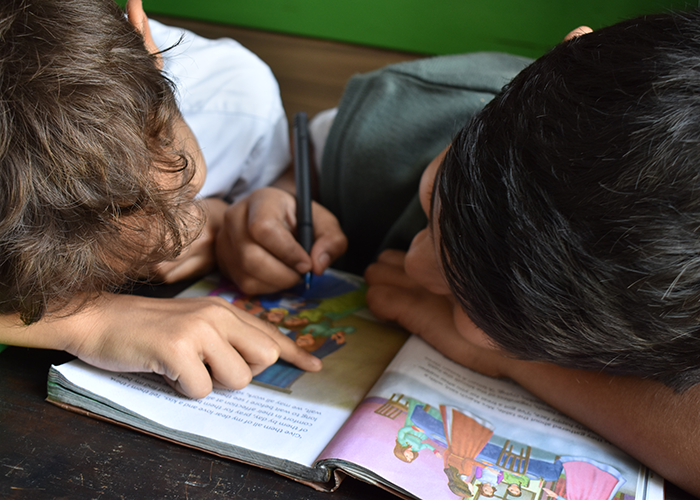Introduction to Creative Learning Products
Creative learning products are game-changers in education. They shift the focus from memorizing facts to embracing creativity and curiosity. Think of them as your toolbox for making learning more engaging and fun. These tools can range from tech gadgets that spark imagination, to simple physical items that offer hands-on experiences. Whether it’s apps that turn math problems into puzzles or kits that turn science experiments into adventures, these products are designed to make the learning process more interactive and rewarding. They’re about opening doors to new ways of understanding subjects by allowing students to explore and experiment. With these innovative tools, the aim is to prepare learners not just to pass exams, but to develop skills and a love for learning that will last a lifetime.
The Evolution of Educational Tools
Educational tools have come a long way from the traditional chalk and blackboard. We’re now in an era where learning can happen virtually anywhere, thanks to technology. Not too long ago, the most advanced gadget in a classroom was the overhead projector. Fast forward to today, and you’ll see interactive whiteboards, tablets loaded with educational software, and online resources that bring subjects to life. The evolution of educational tools is not just about the tech, though. It’s about a shift towards understanding how we learn best. We’ve moved from a one-size-fits-all approach to personalized learning experiences. With tools like adaptive learning software, education is becoming more inclusive and engaging, allowing every student to learn at their own pace. This leap from basic to high-tech tools signifies a broader understanding of the importance of adapting to the needs of the learner, making education not just more interactive but also more effective.
Top Creative Learning Products on the Market Today
There’s no one-size-fits-all in education, and that’s where creative learning products come into play. They break the monotony of traditional education and inject a dose of fun into learning. First up, we have Osmo – a genius blend of physical play and digital apps making learning interactive and entertaining. Kids can draw, spell, and even master math without feeling like it’s a chore. Then there’s Kano – a computer and coding kit designed for the young Steve Jobs in your household. It demystifies computer science, making it accessible and engaging. LittleBits is up next, turning children into inventors. This platform uses easy-to-assemble electronic blocks for creating anything from a remote-controlled car to a smart home device. For those who love stories, Story Cubes are perfect. Roll the dice, and let the pictures guide your child’s imagination to craft unique tales. Each of these products has its charm, simplified to ignite curiosity and foster a love for learning beyond the books.
How Creative Learning Products Enhance Classroom Experiences
Creative learning products act like a bridge, connecting students with the wonders of knowledge in ways that traditional methods sometimes can’t. Think about it. When students get their hands on educational tools that encourage creativity, they dive deeper. Tools like interactive software, augmented reality books, and educational games make learning not just a task, but an adventure. It’s simple – kids learn better when they’re having fun. They remember what they’ve experienced firsthand more clearly than what they’ve just read or heard about. So, what happens in a classroom filled with these innovative tools? Engagement skyrockets. Suddenly, every student wants to participate, eager to explore and understand new concepts. Subjects that once seemed dull or too complex become accessible and exciting. More than just adding excitement, creative learning products invite students to think critically, solve problems in unique ways, and express themselves. They’re not just memorizing facts; they’re applying what they learn in real-world scenarios. Imagine a history lesson where instead of just reading about ancient civilizations, students can explore them through a virtual reality headset. That’s the power of creative learning products – they make the abstract tangible, fostering a deeper understanding and a genuine love for learning.
The Role of Technology in Creative Learning
Technology isn’t just changing the game; it’s creating a whole new playground in education. Think about it. Long gone are the days when a chalkboard and textbooks were your only learning buddies. Now, we’ve got a suite of tech tools that make learning not just interactive, but downright fun. Smartboards replace chalk dust with digital strokes, making lessons vivid and engaging. Then there are educational apps and online platforms, turning solitary study into an interactive adventure where students can explore subjects in a way that sticks. Don’t forget virtual reality (VR) and augmented reality (AR), taking students from their classroom seats to ancient ruins or the human heart’s chambers in a heartbeat. It’s like this: when learning becomes a live action experience, not just a stack of facts, students are hooked, skills sharpen, and creativity soars. And that’s the power of technology in creative learning — transforming the “have to” of education into the “want to,” one click, swipe, and virtual leap at a time.
Examples of Creative Learning in Action
When we talk about shaking things up in the classroom or at home, creative learning tools are leading the charge. Let’s zero in on some standout examples. Makerspaces breathe life into the idea of hands-on learning. Picture a space where kids get to craft, invent, and solve problems using all sorts of materials and gadgets. This isn’t about following a strict guide but rather exploring their curiosity and inventiveness. Next up, coding robots. These aren’t your average toys. They’re designed to teach the fundamentals of programming and computational thinking. Kids don’t just play; they create commands that bring their robot to life, making learning to code a game-like experience. Then there’s augmented reality (AR) books. Reading takes on a new dimension as stories and educational content leap off the page through AR apps on smartphones or tablets. It’s like bringing a field trip into the classroom without leaving your seat. Virtual reality (VR) takes it a step further by immersing students in fully digital environments. Imagine diving into the human body, exploring the depths of the ocean, or walking on Mars—all from the safety of your classroom. This tech sparks imagination and provides hands-on experience with concepts that were previously just words on a page or images on a screen. Finally, interactive whiteboards transform the front of the classroom into an engaging hub of activity. These tools make learning a collaborative experience, allowing students to interact with lesson content in real-time. Each of these examples shows just how far we’ve come from the days of chalkboards and textbooks. Creative learning tools are not just about fun; they’re about making education more engaging, accessible, and effective.
The Benefits of Using Creative Learning Products
Creative learning products spark curiosity and engagement, making learning a more enjoyable experience. These tools vary, from apps and software to physical games and kits, but they all aim to make education interactive and fun. Here’s why incorporating them into learning is beneficial:
Firstly, they cater to different learning styles. Whether a student is a visual learner, prefers hands-on experiences, or learns best through auditory means, there’s a creative product out there for them. This diversity ensures that learning is accessible and effective for everyone.
Secondly, these products encourage critical thinking and problem-solving. By presenting challenges in a game-like format or through interactive scenarios, students are prompted to think outside the box and develop skills vital for real-world success.
Additionally, they foster a love for learning. When education feels less like a chore and more like an adventure, students are more likely to develop a lifelong passion for discovering new things. This enthusiasm for learning can lead to better academic outcomes and a more fulfilling educational journey.
Finally, creative learning tools bridge the gap between theory and practical application. They often simulate real-life situations or provide hands-on projects, helping students understand how their learning applies outside the classroom.
In short, creative learning products are more than just fun; they’re a powerful way to enhance education.
Challenges and Considerations When Implementing Creative Learning Tools
When schools decide to introduce innovative educational tools, they face a set of challenges and considerations. First off, cost is a big factor. These tools aren’t always cheap, and budgets can be tight. Schools need to think hard about the value these tools bring versus their price tag. Then, there’s training. Both teachers and students need to learn how to use these new tools effectively. This means investing time, and sometimes, more money into professional development. Also, accessibility is key. Not every student has the same access to technology at home, so schools must ensure these tools are usable for everyone, everywhere. Another thing to ponder is the relevance of the technology. With tech evolving so fast, what’s new today might be outdated tomorrow. Schools have to choose tools that won’t just be a passing trend. Lastly, integrating these tools with existing systems can be tricky. They need to work with what schools already have in place, not against it. Overcoming these challenges is crucial for schools to really benefit from the potential of creative learning tools.
Future Trends in Creative Learning Products
What’s next in the world of creative learning products? We’re standing on the threshold of exciting developments, ready to revolutionize the way education is approached. Augmented reality (AR) and virtual reality (VR) gadgets are leading the charge, transforming dull lessons into immersive experiences. Imagine history classes where students can virtually walk through ancient Rome or biology lessons where they can explore the human body from the inside. These technologies are not just fancy gadgets; they’re shaping a future where learning is an adventure.
Artificial intelligence (AI) is another game changer. Personalized learning is becoming more than a buzzword—it’s the future. AI can analyze a student’s learning habits and tailor educational content to fit their needs, making education a custom-fit suit rather than a one-size-fits-all outfit. This means that each student can learn at their own pace, focusing on areas that need improvement while skipping over the bits they already know.
Moreover, the rise of coding and STEM (Science, Technology, Engineering, and Mathematics) toys are encouraging problem-solving and critical thinking from an early age. These aren’t just toys; they’re tools that build the foundation for future innovators and thinkers.
Sustainability is also making its way into creative learning products. Materials that are eco-friendly and products that teach sustainability practices show that the future of education cares about the planet just as much as it does about personal development.
In sum, the future looks bright for creative learning products. They’re set to redefine education, making it more engaging, personalized, and relevant to the real world. Keep an eye out; the next big thing in education is just around the corner.
Conclusion: The Impact of Creative Learning on Education
Creative learning tools are changing the game in education. They make learning not just more interesting but also more effective. By incorporating technology and interactive methods, these tools help students grasp complex concepts easier and faster. They’re not just for show; they bring real results. Students become more engaged, and when students are interested, they remember more. It’s not all about memorizing facts anymore. With creative learning, it’s about understanding and applying knowledge. Teachers also find these tools a breath of fresh air, offering new ways to reach students and customize lessons to fit diverse learning styles. In short, creative learning tools aren’t just another trend; they’re shaping the future of education, making learning a journey that every student wants to embark on.





